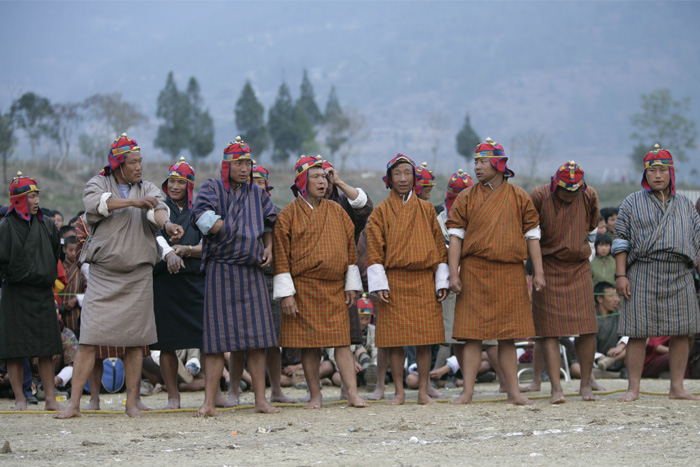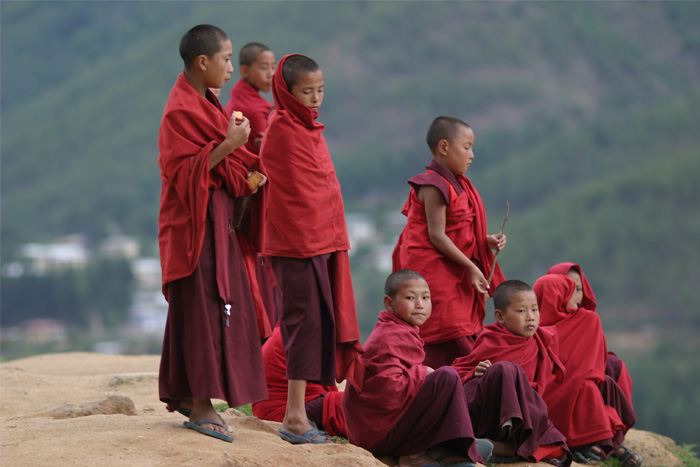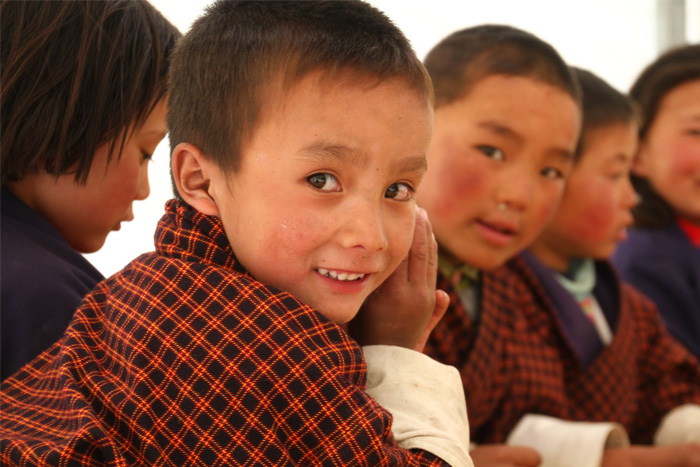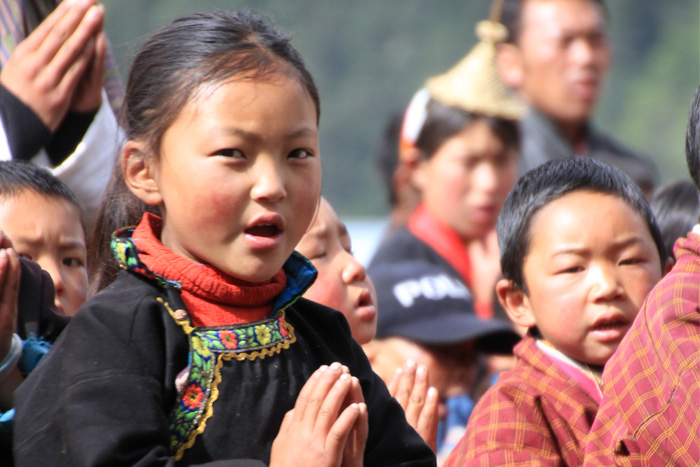People / Dress
People
Apart from culture, nature and other treasures of the Himalayan Kingdom, travellers experience the full glory of this magical Kingdom, including something exclusively Bhutanese and perhaps most important of all – the warm smiles and genuine friendliness of the people.
Physically strong and fiercely independent, Bhutanese have an open and ready sense of humor. Hospitality is an innate characteristic of the Bhutanese and respects for elders an inherited social value.
More than 70 percent of the people live on subsistence farming, scattered in sparsely populated villages across the rugged terrain of the Himalayas. With rice as the staple diet in the lower regions, and wheat, buckwheat, and maize in other valleys, the people farm narrow terraces cut into the steep hill slopes.
Apart from culture, nature and other treasures of the Himalayan Kingdom, travellers experience the full glory of this magical Kingdom, including something exclusively Bhutanese and perhaps most important of all – the warm smiles and genuine friendliness of the people.
Physically strong and fiercely independent, Bhutanese have an open and ready sense of humor. Hospitality is an innate characteristic of the Bhutanese and respects for elders an inherited social value.
More than 70 percent of the people live on subsistence farming, scattered in sparsely populated villages across the rugged terrain of the Himalayas. With rice as the staple diet in the lower regions, and wheat, buckwheat, and maize in other valleys, the people farm narrow terraces cut into the steep hill slopes.
Dress
Bhutanese men wear a heavy knee-length robe tied with a belt, called a Gho, folded in such a way to form a pocket in front of the stomach. Women wear colourful blouses over which they fold and clasp a large rectangular cloth called a Kira, thereby creating an ankle-length dress. A short silk jacket, or Toego may be worn over the Kira. Everyday Gho and Kira are cotton or wool, according to the season, patterned in simple checks and stripes in earth tones. For special occasions and festivals, colourfully patterned silk Kira and, more rarely, Gho may be worn.
Additional rules of protocol apply while visiting a Dzong or a temple, or when appearing before a high level official. Male commoners wear a white sash (Kabney) from left shoulder to opposite hip. Local and regional elected officials, government ministers, cabinet members, and the king himself each wear their own colored kabney. Women wear a narrow embroidered cloth draped over the left shoulder called Rachu.





